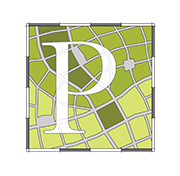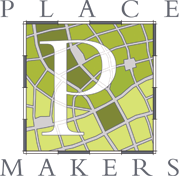A Placemaking Journal
Learning from Leon
My colleagues have quickly grown tired of my repeated references to the week I recently spent with Leon Krier while he toured Southern California to promote his new book, The Architecture of Community. The book, published by Island Press and co-edited by Dhiru Thadani and Peter Hetzel, is an updated compendium of Leon Krier’s most significant work to date. The book was included in Planetizen’s Top 10 Books published in 2009.
Before this publication, Geoff Dyer, one of my business partners, and I had been engaged in a silly professional competition to acquire Leon’s books because it was difficult to find his many brilliant books and projects for sale in United States book stores. My rare French copy of Architecture Rationnelle put me in the lead until Leon autographed Geoff’s copy of Architecture: Choice or Fate, led with “To the very talented…”
With a stroke of Leon’s pen, Geoff now sits comfortably in the lead.
Leon came to San Diego to give a lecture on architecture and urbanism to 250 interested people in a beautiful Balboa Park theater and then to 200 excitable students and faculty at the NewSchool of Architecture and Design. Local reporters, planning directors, and political leaders heard, met and learned from Leon throughout the week. San Diego Union-Tribune and San Diego City Beat wrote about his time in the city.
After San Diego, Leon then spoke to a class at Arizona State University with Emily Talen and Nan Ellin. He then joined Stefanos Polyzoides in Pasadena to discuss architecture and urbanism at the invitation of the Mayor of Pasadena. Pasadena Star News and Pasadena blogs Inside Socal and Media Bistro covered the visit.
The lessons learned from Leon while touring the Southwest were varied, complex and meaningful. The more general themes surprised me most. For example, upon picking him up from the airport, I immediately drove Leon to the latest modernist infill project in my turn-of-the-century streetcar neighborhood. The villa savoye copy had been in Architecture Record as the local architect is well known.
Upon passing by the building slowly, I was expecting an affirmation of my disgust when Leon says–disappointingly– “It’s good.” My eyes widened and my hands gestured wildly as I explained that the fenestration was backwards, the building completely out of context, and the urbanism only existent in materials and scale. Leon agreed that all were true, but that for a modernist building it was a very good example.
The lesson being, “If you do modernism (or anything for that matter)… then do it well.” He is correct. I forget how difficult it is to get buildings and places built. He said that to build anything in today’s toxic environment (naturally and politically) was laudable and then to build it well was meaningful. So, I relaxed a little about a building I had previously wished acts of God upon and drove Leon downtown.
Driving past the single core of the city, townhouse-wrapped, Vancouver-model towers proliferate San Diego’s downtown cityscape. I explained the ugly politics that gave additional entitlement to buildings that had green roofs rather than civic spaces. I was expecting a classic Leon Krier diatribe on the lack of value Vancouver brings to the New Urbanist dialog and both the ecological and social failure of high-rise towers as a building type. Instead, he thought San Diego’s towers were somewhat playful and fun. He explained that while towers are regretful, these had an element of lightness and amusement that made them easier to live with than those being stamped across Vancouver and the east coast.
Finally, he quickly surmised that our monotonous grid must become more complex. As he had pointed out years ago in Houses, Palaces, and Cities, the grid is rural in structure with its visual terminus toward infinity. A simple ‘center’ was needed in key locations to ‘urbanize’ the neighborhoods within the monotonous grid. Due to the width of San Diego’s typical streets, 80’, a majority of the infill retrofit could occur within city right-of-way and include civic buildings.
Therefore, mostly what I learned from Leon (besides the fact that driving around was much less informative than walking) was to approach places and projects with a positive, optimistic attitude in order to work towards a better future. Why is this simple lesson meaningful? To see this man remain positive after 35 years of being vilified in our modern design world is very inspirational. While his professional lectures are polemic and absolute, his professional perspective is equally optimistic and conclusive.
The following are Leon Krier’s recent drawings of how to create more urban centers in our more rural grid:
–Howard Blackson










